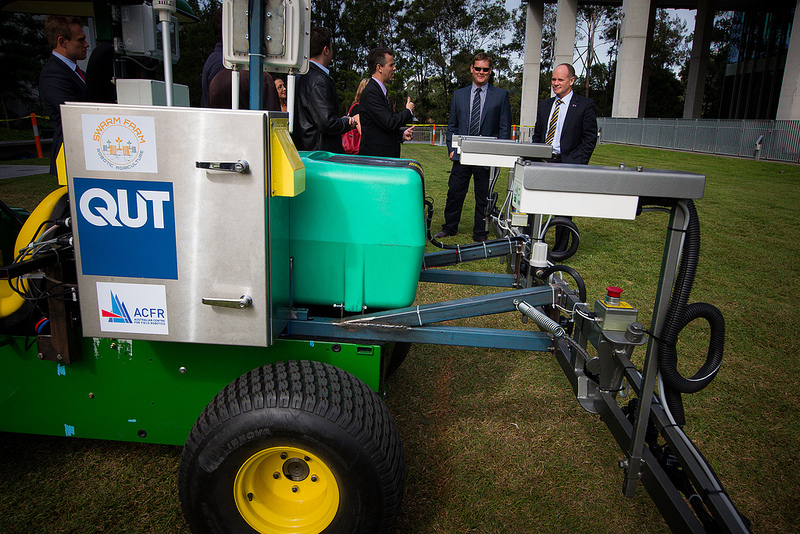AgBot brings auto-farming closer
 Farmers are often misrepresented as a technologically-backward lot, but now with the help of the internet, satellites, robots and scientists, some Queensland growers are leaping into the future.
Farmers are often misrepresented as a technologically-backward lot, but now with the help of the internet, satellites, robots and scientists, some Queensland growers are leaping into the future.
Fleets of small robots which communciate with each other and their operator online - while working to spray crops and identify diseases - might sound like science fiction but in central Queensland it is fast becoming just another part of food production. A number of prototypes of agricultural androids have been developed by the Queensland University of Technology and the Australian Centre for Field Robotics in Sydney on the back of Federal funds.
QUT’s latest generation of on-farm helper is called 'AgBot' and was presented to the Queensland Premier and Agriculture Minister over the weekend.
Agricultural robots are being developed for a range of tasks around the world; trials in Queensland have previously used the internet and satellite mapping techniques to program paths for autonomous monitoring and spraying units. Reports say a more comprehensive internet infrastructure in rural areas will be needed for the technology to take off throughout the country.
A farmer from the small town of Gindie has been instrumental in assisting with conceptualisation of tasks and on-farm trials. Farmer Andrew Bates said he first thought of agricultural applications for robots while thinking about the automation of manufacturing and the use of drones by the military.
“People talk about the holy grail of a driverless tractor; to me that became obsolete about ten years ago... what we are looking at is swarms of small, lightweight machines that work together in a cooperative team,” Mr Bates says, “so instead of one large tractor you might have six small ones about the size of a ride on lawn mower... everyone is getting bigger and bigger machines... the damage they are doing to the soil is enormous... we are trying to pull out a splinter with a set of fencing pliers, we should be using tweezers.”







 Print
Print